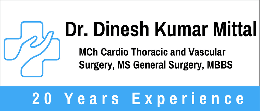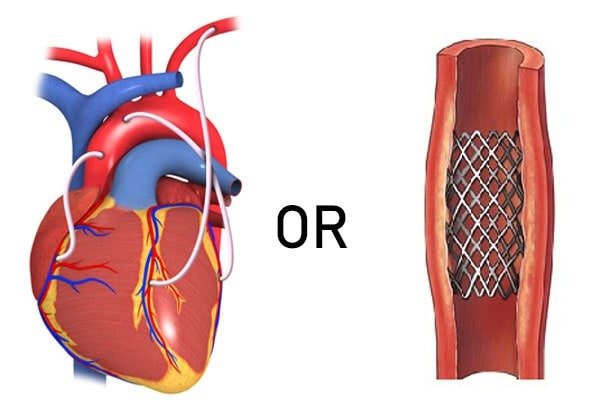Learn about the latest trends, expert insights, and engaging stories in our blog – a hub of information crafted to enrich your mind and inspire positive change.
Blog list
In India, cardiovascular disorders are becoming a bigger problem, impacting millions of people annually. Vascular disease is one of the most prevalent types of these illnesses, in which blood supply to essential organs is restricted due to artery narrowing or blockage. Serious side effects like heart attacks, strokes, and limb amputation may result from these disorders if left untreated.
Research indicates that in India, cardiovascular diseases (CVDs) contributed to 28.1% of total deaths and 14.1% of total disability-adjusted life years (DALYs) in 2016. Recent advances in cardiovascular treatment are changing this landscape. Stent placement, a minimally invasive procedure to restore blood flow, has become an increasingly important tool in addressing coronary artery disease, a key contributor to CVD in India.
Renowned cardio surgeon Dr. Dinesh highlights, “Many people suffer from vascular problems that should have been addressed sooner. With advancements in technology, we now have a wider array of treatment options available, including less invasive approaches like stent placement. Determining the most effective approach – whether it’s traditional open surgery or a newer technique – requires a comprehensive understanding of the patient’s individual needs and the latest evidence-based practices.”
This blog explores key factors influencing the decision between stent placement and open vascular surgery. It also highlights the differences between stents and open vascular surgery, highlighting how these treatment options impact patients, their risks and benefits, and the importance of consulting with specialists to make informed decisions.
What is Vascular Disease?
Vascular disease describes disorders that impair blood flow by affecting the arteries, veins, and lymphatic vessels. Atherosclerosis is a major cause of vascular disease, in which fatty deposits called plaque accumulate in the artery walls, narrowing and hardening them.
Common types of vascular disease include:
- Coronary artery disease (CAD): Affects the heart’s arteries.
- Peripheral artery disease (PAD): Affects the blood vessels in the limbs, particularly the legs.
- Carotid artery disease: Affects the arteries supplying the brain, increasing the risk of stroke.
- Aneurysms: Weak spots in the artery walls that can bulge and rupture.
How Does Vascular Disease Affect You?
Vascular diseases affect individuals in various ways, contingent upon the location and severity of the blockage or narrowing. The impact can range from mild to life-threatening:
- Chest Pain (Angina): Narrowed coronary arteries can cause chest pain or discomfort, especially during physical activity or stress.
- Leg Pain or Cramping: Peripheral artery disease can cause pain, cramping, or fatigue in the legs and feet, particularly during exercise.
- Stroke: Blockage or rupture of arteries supplying the brain can lead to stroke, resulting in neurological deficits such as weakness, speech difficulties, or paralysis.
- Kidney Damage: Reduced blood flow to the kidneys can impair their function and lead to kidney disease.
- Amputation: In severe cases of peripheral artery disease, restricted blood flow can lead to tissue damage and potentially require amputation of a limb.
A patient shares his experience: “I had constant leg pain that made even walking unbearable. After consulting with Dr. Dinesh, I was hopeful again. The procedure he recommended gave me a chance to live pain-free.”
What Procedures are Used to Treat Vascular Disease?
There are several treatment options for vascular diseases, each tailored to the severity and location of the blockage:
- Medication: For milder cases, medications to manage blood pressure and cholesterol levels and prevent blood clots may be prescribed.
- Angioplasty and Stent Placement: This minimally invasive procedure involves using a catheter to widen the blocked artery with a balloon and then placing a stent (a small mesh tube) to keep the artery open.
- Bypass Surgery: When arteries are severely blocked, bypass surgery creates a new route for blood flow around the obstruction using healthy blood vessels from elsewhere in the body.
- Endarterectomy: A procedure where plaque buildup is surgically removed from inside the artery.
- Open Vascular Surgery: A broader term that includes procedures like bypass surgery and endarterectomy. This involves making larger incisions to access and treat the affected blood vessels directly, often used when minimally invasive methods are not an option.
Each option is considered based on the patient’s health, the location of the blockage, and the severity of the condition. A thorough diagnosis is crucial in determining the best approach.
Dr. Dinesh Mittal adds, “Every patient’s needs are unique, and the right treatment plan is key to improving vascular health. Early intervention often leads to better outcomes and a quicker recovery.”
Stent vs Bypass Surgery: What Should You Consider?
The decision of stent placement vs bypass surgery is complex and based on many factors. Here are key considerations:
- Location and Extent of Blockage: Stent placement is often preferred for shorter, more accessible blockages. Bypass surgery is generally considered for longer, more complex blockages or when multiple arteries are affected.
- Patient Health: Stent placement is less invasive and has a faster recovery time, making it a better option for patients who are not suitable for major surgery due to age or other health conditions.
- The severity of Symptoms: Patients with severe symptoms, such as debilitating chest pain or limb ischaemia, may require more aggressive treatment, such as bypass surgery.
- Risk Factors: The presence of other risk factors, such as diabetes, smoking, and high blood pressure, can influence the choice of treatment.
- Long-Term Outcomes: Both stent placement and bypass surgery can effectively relieve symptoms and improve blood flow. However, bypass surgery may have better long-term outcomes in certain situations, such as in patients with multiple blockages in the coronary arteries.
Therefore, the choice between stent placement and bypass surgery is a complex, individualised decision requiring careful consideration of various factors in consultation with a physician.
When to Choose Stent Placement Over Open Surgery?
Stent placement is often the preferred option due to its less invasive nature. However, it should be evaluated based on the patient’s condition:
- Shorter and Accessible Blockages: Stent placement is best for localised, shorter blockages that can be accessed easily with a catheter.
- Patient Health: For patients with underlying conditions or those who cannot undergo major surgery, stent placement offers a minimally invasive option with faster recovery times.
Thus, stent placement is favored for specific blockage types and patients unsuitable for major surgery due to its less invasive nature and faster recovery.
When Open Surgery is the Best Option?
While stent placement is often the preferred option, there are situations where open surgery is more effective. Dr. Dinesh adds, “In certain complex cases, open surgery offers a more permanent solution. It’s important to assess each patient’s unique condition before deciding on the treatment plan.”
- Complex or Extensive Blockages: When blockages are too long, severe, or located in hard-to-reach arteries.
- Failed Stenting Attempts: In some cases, stenting may not work, especially if the blockage is too severe or complex to access.
Dr. Dinesh’s patient expressed emotions by saying “Doctors told me my case was too complicated—stents simply wouldn’t work. I was terrified of open surgery, but Dr. Dinesh explained everything so clearly. His reassurance gave me the confidence to move forward, knowing it was the best way to regain my health.”
What are the Pros and Cons of Stent Placement and Open Vascular Surgery?
Both options have several benefits and drawbacks. Some of them are listed here:
Stent Placement (Minimally Invasive)
- Approach: Similar to repairing a pipe from within, a catheter delivers a mesh stent to keep the artery open.
- Best For: Short, accessible blockages; patients unable to undergo major surgery.
- Benefits: Smaller incisions, reduced pain, quicker recovery.
- Limitations: Ineffective for complex, severely calcified, or hard-to-reach blockages.
Open Vascular Surgery (Bypass)
- Approach: Comparable to replacing a damaged section of a pipe, blood flow is rerouted using a grafted vessel.
- Best For: Long or complex blockages, severely damaged arteries, or cases requiring a long-term solution.
- Benefits: Provides direct access to arteries, offering a durable solution for advanced vascular disease.
- Limitations: More invasive, longer recovery, and higher risk of complications
Conclusion
When deciding between stent placement and open surgery, the choice depends on factors such as blockage location, patient health, and symptom severity. Stent placement offers a quicker recovery with a minimally invasive approach, while open surgery may be required for more complex or multiple blockages. Consulting a specialist is crucial to evaluate your condition and recommend the most suitable treatment plan.
If you’re experiencing vascular problems, don’t delay. Reach out today to explore your treatment options and discover the best solution for your unique health needs. Your heart health deserves the care and attention it needs for a healthier future!
FAQs
1. When is stent placement preferred over open surgery?
Stent placement is typically preferred for shorter, accessible blockages in the arteries, especially for patients who are not suitable for major surgery due to age or other health conditions.
2. What are the most common types of stents used in vascular procedures?
Standard stents include bare-metal stents, drug-eluting stents (DES), and bioresorbable stents.
3. How long does it take to recover after stent placement or bypass surgery?
Recovery after stent placement usually takes 1-2 weeks, while bypass surgery requires a more extended recovery period, typically 4-6 weeks or more, depending on the patient’s health.
4. What are the potential risks of stent placement?
Potential risks include bleeding, infection, blood clots, restenosis (re-narrowing of the artery), and allergic reactions to contrast dye.
5. What is the cost difference between stent placement and bypass surgery?
Stent placement generally costs between ₹1,50,000 to ₹3,00,000, while bypass surgery can range from ₹3,00,000 to ₹7,00,000, depending on factors like the hospital, patient condition, and treatment complexity.
Explore More Blogs: Vascular Surgery: Types, Benefits, and Role in Preventing Life-Threatening Complications
Copyright by www.drdineshkumarmittal.com 2024. All rights reserved.
Copyright by BoldThemes 2018. All rights reserved.


